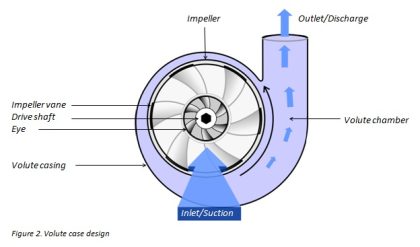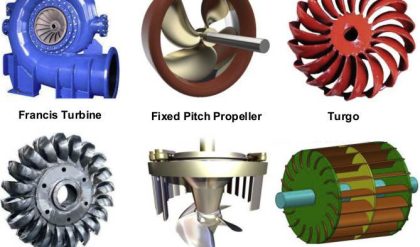DIFFERENCES BETWEEN SOLIDS AND FLUIDS
The differences between the behaviors of solids and fluids under an applied force are as follows:
i. For a solid, the strain is a function of the applied stress, providing that the elastic limit is not exceeded. For a fluid, the rate of strain is proportional to the applied stress.
ii. The strain in a solid is independent of the time over which the force is applied and, if the elastic limit is not exceeded, the deformation disappears when the force is removed. A fluid continues to flow as long as the force is applied and will not recover its original form when the force is removed.
MOMENTUM EQUATION
Net force acting on fluid in the direction of x=Rate of change of momentum in x direction
=Mass per sec×Change in velocity
p1A1-p2A2×cos θ-Fx=ρQ(v2cosθ-v1)
Fx=ρQ(v1-v2cosθ)-p2A2cosθ+p1A1
Similarlt,the momentum in y-direction is -p2A2sinθ+Fy=ρQ(v2sinθ-0)
Fy=ρQv2sinθ+p2A2 sinθ
Resultant force acting on the bend,
Fr=√Fx²+Fy²
GLOSSARY
Quantity : Unit
Mass in Kilogram : Kg
Length in Meter : M
Time in Second : s or as sec
Temperature in Kelvin : K
Mole : gmol or simply as mol
Derived quantities:
Quantity : Unit
Force in Newton (1 N = 1 kg.m/s2) : N
Pressure in Pascal (1 Pa = 1 N/m2) : N/m2
Work, energy in Joule ( 1 J = 1 N.m) : J
Power in Watt (1 W = 1 J/s) : W


